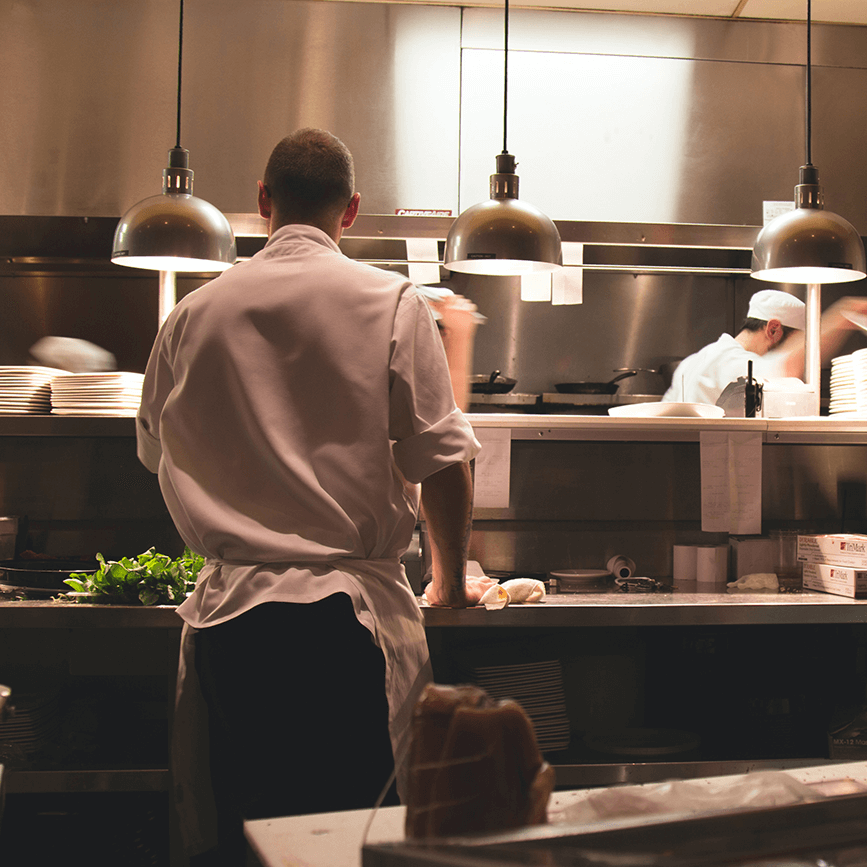INSIGHTS
The path to the next normal
April 8, 2020 / Jim McCaul (Author)
We still don’t know what the full impact of COVID-19 will be on our industry. The latest data from the World Travel & Tourism Council shows a potential GDP loss of up to $2.1 trillion in 2020. Perhaps even more alarming, up to 75 million jobs are at immediate risk, bringing real and profound worry to communities around the world.
For many organizations, short-term survival is understandably their sole focus. Others are peering through the fog of uncertainty, thinking about how to position themselves once the crisis has passed and things return to normal. But many in our industry are asking, “what will normal look like?”
It is increasingly clear that what we find on the other side of this crisis will not look like the normal of recent years. Our world and our industry will be defined by a fundamental division: the era before COVID-19 and the new normal that will emerge in the post-pandemic era: the “next normal.”
We are already seeing the beginning of the discussion and debate about what the next normal could entail and destinations are developing plans for how tourism will operate in a post-COVID-19 world.
Here are a few things that destinations should be thinking about to steward their communities in the next normal.
Return
Restarting our visitor economies will be no simple task. There is general consensus among many in the industry that this will require a phased approach, with a focus on short-haul domestic visitors in the short-term before long-haul international visitors are ready and able to return. And as such, DMOs are shifting their marketing strategies as we speak to develop content and campaigns targeting these short-haul visitors with a heightened focus on localism, nature, wellbeing, and safety. At the same time, others have pulled together task forces to focus on supply-side considerations because the next normal won’t just require attracting new markets and visitors, it will also require offering a visitor experience that addresses the needs and concerns of travelers in the post-crisis environment.
What might this new visitor experience look like? For starters, health and safety will be a critical concern that needs to be addressed upfront and communicated to visitors in destination. John Holland-Kaye, CEO of Heathrow Airport, has called for airports around the world to start running temperature scans of all passengers as the coronavirus pandemic grounds much of the aviation industry. UAE carrier Etihad Airways will begin testing new technology at the airport in Abu Dhabi to screen passengers with medical symptoms including potentially early signs of COVID-19. Entry points into the destination such as airports offer destinations an initial opportunity to convey what they are doing to keep visitors healthy and safe.
That message of providing a safe and healthy experience needs to be extended throughout the visitor journey. In light of the on-going crisis, Enterprise Singapore and the Singapore Tourism Board have rolled out the SG Clean quality mark to the tourism and lifestyle sectors. The SG Clean campaign is a government effort to rally businesses and the public to uphold good sanitation standards and hygiene practices. Over the next few months, ESG and STB will encourage more than 37,000 businesses within the tourism and lifestyle sectors to sign up for the SG Clean certification program.
Destinations will have to rethink carrying capacities. Prior to COVID-19, carrying capacity was thought of in the context of overtourism – the maximum number of visitors a place could sustain without significantly depleting resources or degrading the visitor experience. That definition will need to be completely rewritten in the next normal now that ‘social distancing’ is part of our regular vocabulary. How many visitors can you host in a convention center, stadium, park or other public space while maintaining a sense of health and safety?
Mobility and connectivity will also need to be rethought as visitors and residents move away from public transportation in the short-term. In Toronto and Vancouver, officials are looking into closing some parts of their streets to vehicles, while New York has closed some of its streets to vehicle traffic to allow more room for pedestrians. Many people may not want to give their streets back to heavy traffic volumes after this, so there will be a lot more advocacy for urban walkability.
Asset mapping now takes on a whole new meaning. In the past, destinations could utilize asset mapping techniques to understand the makeup and geography of their various experiences, and plan development strategies accordingly. In this next normal, destinations will need to map which of their assets are still viable and plan marketing and development strategies accordingly.
All of us are anxious for a time when our destinations can reopen and welcome visitors again, and we’re all fervently watching a multitude of indicators to try and determine when that time will be. But there are steps you can be taking now to prepare to reopen in a strategic manner whenever that time comes.
Reimagination
There’s been a lot talk in our industry and others about the need for a ‘reset’. I don’t believe tourism needs to be reset; I believe it needs to be reimagined. A ‘reset’ would discount the significant debates and discussions that were taking place within the industry before the arrival of COVID-19.
A quick look at the top strategies from the 2019 DestinationNEXT Futures Study reveals the momentum of transformation. Some of the biggest shifts in our industry prior to COVID-19 were:
- My destination organization will act as a conduit to build social networks among our local business community.
- My destination organization and destination have a key responsibility to protect and steward our natural environment and our authentic social and cultural characteristics.
- My destination organization will balance the need for growth with responsible and sustainable development.
- My destination organization will develop outreach programs in our local community to broaden our networks.
- My destination organization will engage in scenario planning to help us be prepared for future disruptions and opportunities.
Those shifts will only become more acute over the next few months because of the fluidity of the moment and the willingness of stakeholders to accept transformative changes. Our public officials, stakeholders and community members now fully understand and appreciate the value of our visitor economies. This newfound appreciation provides an opportunity to reimagine the way we approach tourism to ensure that we build more sustainable destinations, enrich the lives of both visitors and residents and deliver a sector that is financially self-sustaining in the longer term.
Reimagination doesn’t mean long-term tourism plans developed prior to this crisis get thrown out the window. Those tourism master plans, destination development plans, and destination stewardship plans are still viable. The Netherlands and several other destinations were already developing long-term tourism plans to guide them down the path to the next normal. The crisis of COVID-19 will offer more destinations an opportunity to follow suit.
Resilience
Four in ten destination organizations anticipate short-term budget cuts of at least 50%, according to the most recent COVID-19 Industry Pulse Check from MMGY Global and the Destinations International Foundation. In the face of these challenges, resilience is a vital necessity. Near-term issues of cash management are paramount and being addressed in a number of ways. However, soon afterward, organizations will need to act on broader resilience plans as the crisis fundamentally changes the way we look at travel and our visitor economies.
Building resilience is fundamentally about creating and expanding partnerships. As my colleague Greg Oates pointed out early on in this crisis, some organizations such as Visit Fort Worth was able to pivot quickly to effectively engage local residents and businesses because they had evolved intentionally in recent years as a more community-driven, resident-focused organization.
DMOs have become more connected with their local communities during this crisis and developed strategic alliances outside the tourism industry. Maintaining and expanding upon those alliances post-mitigation will be critical to ensure future resiliency.
What does a resilient visitor economy look like? In its call to action, Supporting Jobs and Economies Through Travel & Tourism, the United Nations World Tourism Organization outlines a number of actions that destinations can take to prepare for tomorrow. Some key recommendations include:
- Diversifying tourism to avoid dependence on one single activity or market – Because international travelers are considered ‘high-value visitors’, they are often a priority market for destinations. However domestic markets are often the backbone of the industry and should not be forgotten. At the same time, tourism master planning can help destinations develop a diversified visitor experience that remains more resilient to market fluctuations.
- Investing in human capital and talent development – Our industry was already facing a workforce issue, which will only be compounded by the COVID-19 crisis. Destinations must build resilience and prepare for the future of work through a skilled and prepared workforce, and adequate education and training strategies. This week, Jamaica’s Tourism Minister Edmund Bartlett announced the launch of a free online training program for tourism workers affected by the negative impact of COVID-19.
- Transitioning to the circular economy – Support the transition towards a circular economy – this crisis is also an opportunity to place a stronger emphasis on the development of strategies that enhance coordinated action and decisions across all actors in the tourism supply chain (producers, distributors, consumers, etc.). This can support integrating circularity in tourism operations, transitioning to more resource-efficient and low carbon tourism operations, while also enhancing the competitiveness and resilience of the sector as a whole. This week, the city of Amsterdam released the Amsterdam City Doughnut, an innovative new approach to what the circular economy can look like for cities.
- Strengthen DMOs for effective and sustainable development of tourism – What mandates, business models, skillsets, funding structures, and metrics will DMOs require to navigate this next normal? This is something that we at MMGY NextFactor are working to help the industry answer.
How exactly this crisis evolves remains to be seen. But there’s little doubt that on the other side our industry will be facing a new normal. We can begin preparing today to ensure the next normal is one that is more resilient, sustainable and prosperous than before.


